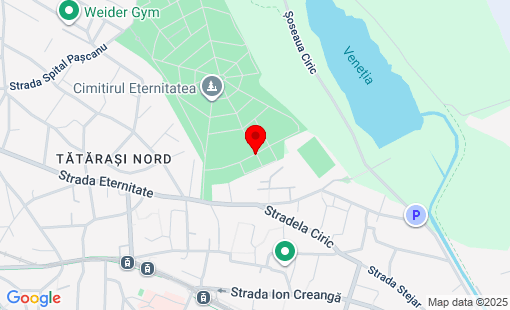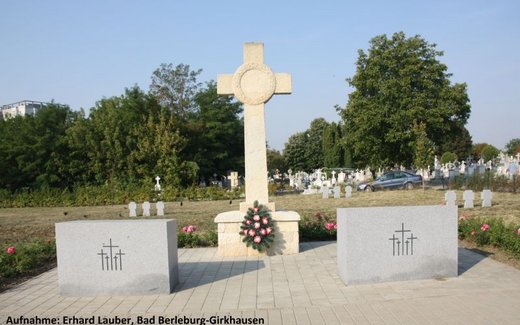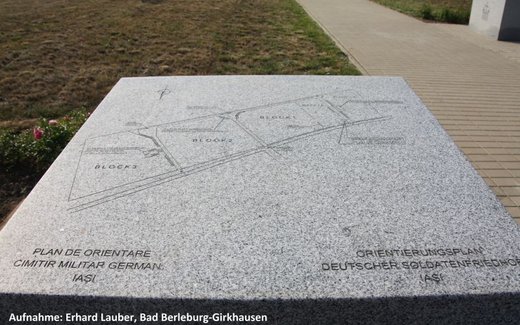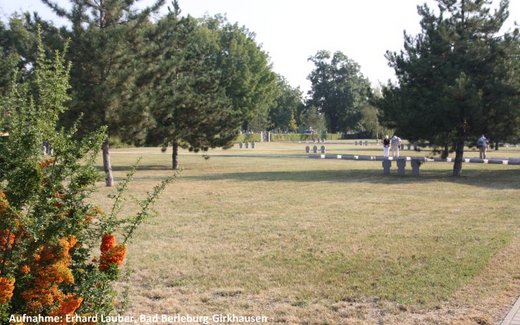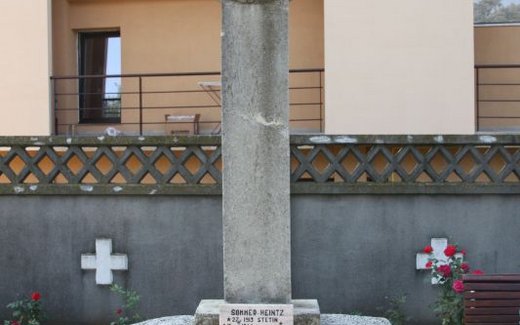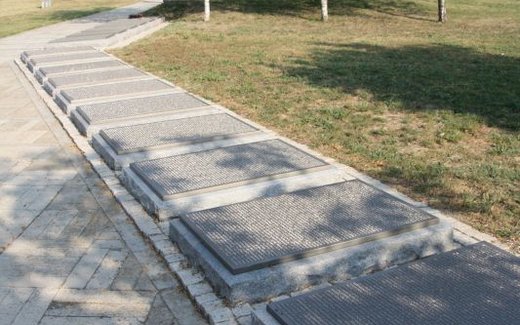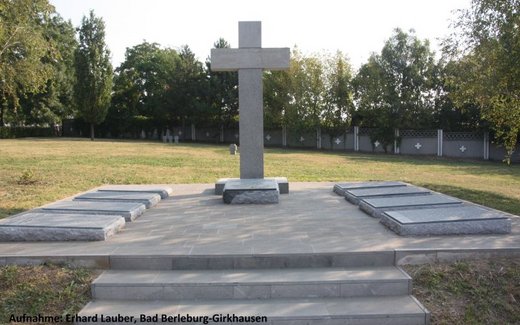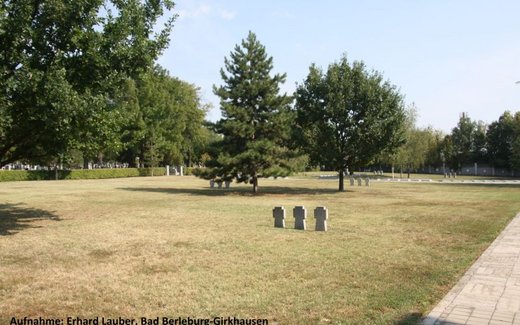The German war cemetery in Iași is located in the north-east of the country in the
Region of Moldova and is part of the "Cimitirul Eternitatea" ("Eternity Cemetery"), the
largest cemetery in the city.
Cemetery description
Groups of symbolic crosses mark all the burial plots in the grounds, which are planted with trees
and rose bushes. A restored high cross from the First
World War I on a small memorial square is the central point. Since 2019
the names of 2,600 dead have been inscribed on 26 aluminum plaques.
Occupancy
In 1940, the immediate threat posed by the Soviet Union prompted Romania
to move closer to the German Reich, which sent a military mission.
As a result of an attempted coup, the country was transformed from a
constitutional monarchy into a military dictatorship.
Romanian troops took part in the German attack on the Soviet Union from June 1941
in view of their own losses and the gradually looming defeat of Germany, the readiness for war
Germany's gradual defeat, the readiness for war declined significantly.
Following a coup d'état in August 1944, Romania broke off diplomatic
Relations with Germany, issued a declaration of war and concluded an armistice with the
An armistice with the Soviet Union in September. Subsequently
romanian soldiers fought with the Soviet army against Germany.
Around 380,000 Romanians died in the Second World War - both soldiers and civilians
Civilians. At the "Cimitirul Eternitatea" in Iasi, 850 German soldiers were buried in individual graves during the war
3.850 German soldiers were buried in individual graves on five plots.
Today, around 2,200 German soldiers known by name rest in blocks 1 and 2
Soldiers. Metal plaques at the edges of the plots document their names.
An additional area made available to the Volksbund made it possible to create a third block
third block. in 1996, 840 dead from the former plots D and F of the cemetery were reburied there
Cemetery were reburied there.
In addition, the mortal remains of more than 4,000 dead from several
from several municipalities.
History
After the war, the cemeteries fell into disrepair. The graves on the
Plots C and E with 770 dead were leveled and since the end of the 1980s have been
Completely covered with Romanian civilian graves. As a result, the
Position of the individual graves previously visible above ground could no longer be
reconstructed.
in 1993/94, the Volksbund Deutsche Kriegsgräberfürsorge e. V. (German War Graves Commission) negotiated
the securing and restoration of the remaining cemeteries. The
The city council approved the redesign of plots F and G, now known as
Block 1 and 2, and the addition of a third trestle. The
War cemetery was opened to the public on September 21, 1996.
On December 10, 1997, the German-Romanian War Graves Agreement came into force
Came into force. The contractual partner of the Volksbund Deutsche Kriegsgräberfürsorge e. V. is
the Romanian "Government Office for the Veneration of Heroes" ("Oficiului Naþional pentru
Cultul Eroilor") in Bucharest.
Soon after the fall of the Iron Curtain - from 1999 onwards - the number of
organized by the Volksbund Deutsche Kriegsgräberfürsorge e. V. in Romania increased
Work camps for young people and work assignments for German soldiers organized by the
Who volunteered to carry out repair and maintenance work on war gravesites
as volunteers. The Romanian Ministry of Defense as well as the central and local
local authorities supported these activities. The Romanian military
took part in the maintenance work, accommodated the groups in its bases and
Bases and catered for them there.
Special feature
German soldiers were already buried at the "Cimitirul Eternitatea" during the First World War
Soldiers were buried on the "Cimitirul Eternitatea" - some in individual graves, but most in an
"Osuar" (ossuary) together with Romanian soldiers.
During the First World War, an estimated 53,000 German soldiers died in Romania
Soldiers died in Romania. Almost 50,000 of the war dead, including more than 34,000
known by name, are recorded in Romanian cemetery lists. These are kept by
164 municipalities as cemetery or grave locations.
